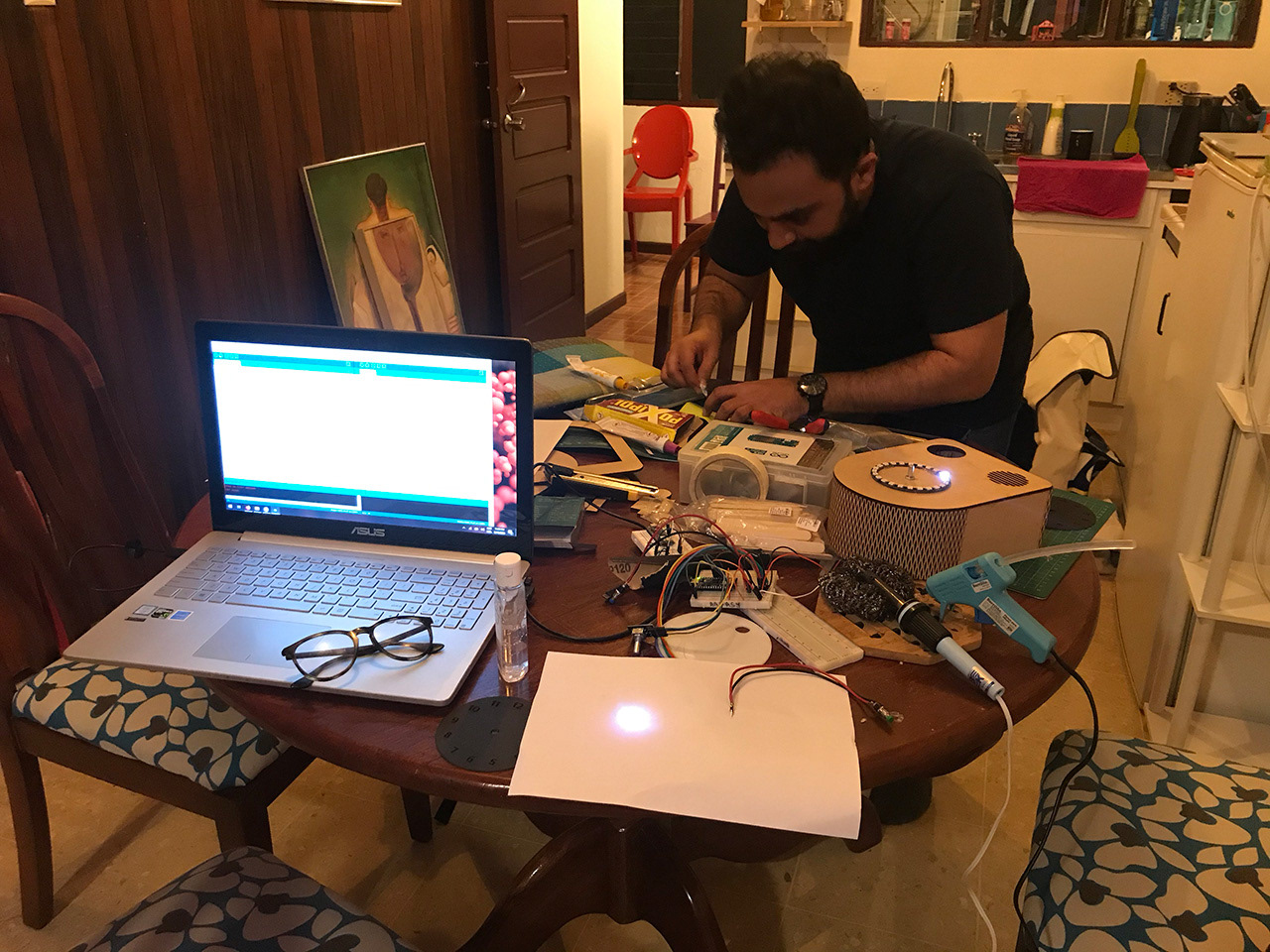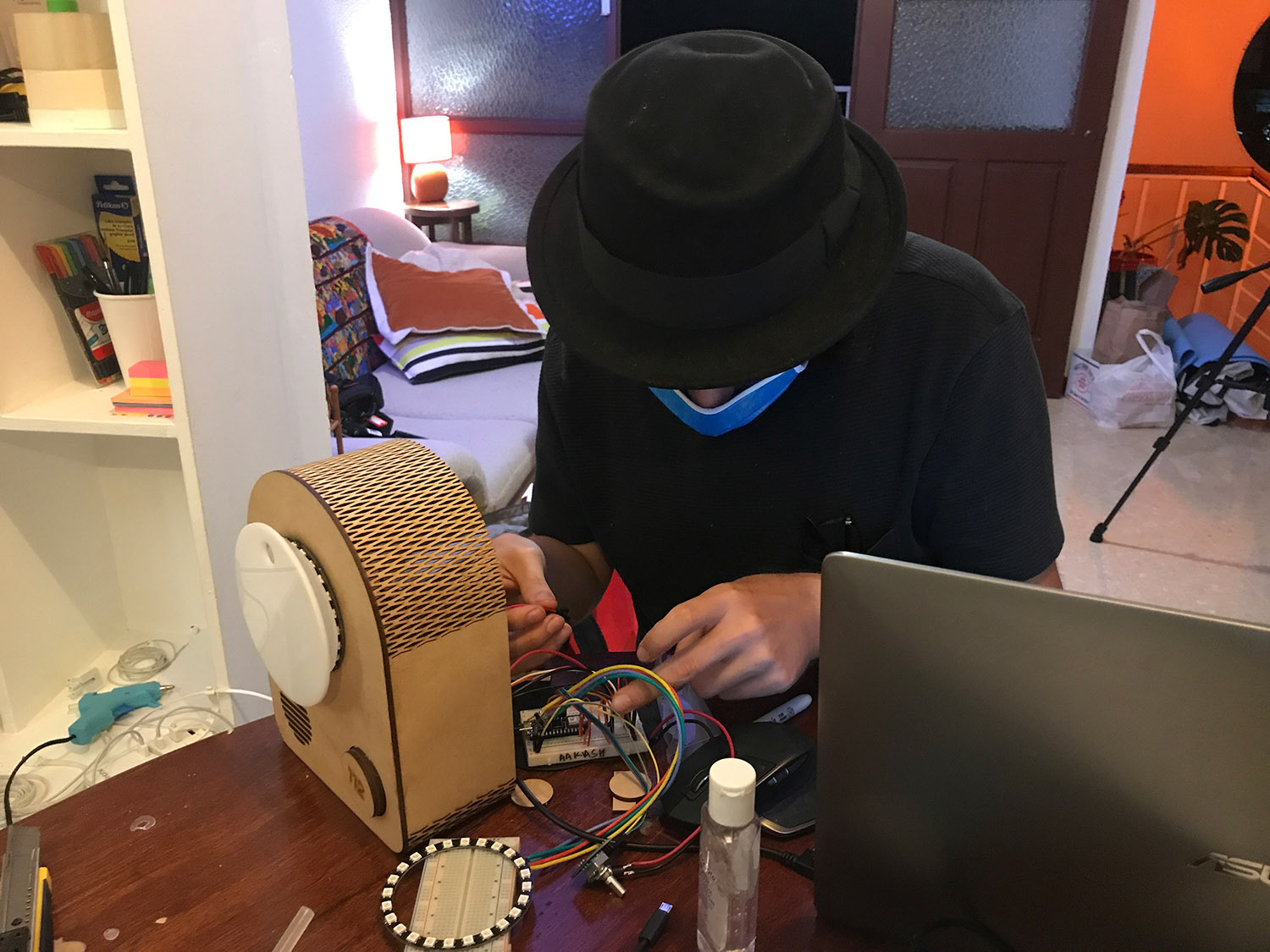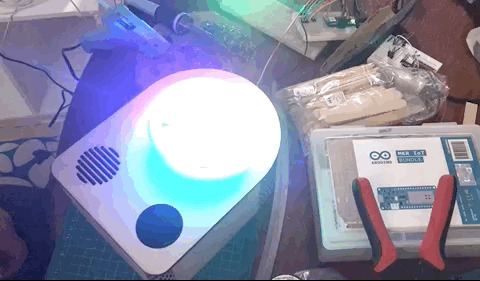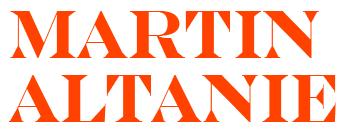Created at CIID (Copenhagen Institute of Interaction Design)
Course: Connected Objects - Tangible User Interface
Course Date: 7-25 Sep 2020 | Production Timeline: 1 day
Faculty: Olivia Prior, Vanessa Carpenter, Omid Ettehadi, Dzl
Team: Aakash Dewan | Jose Chavarria | Martin Altanie
Hardware: Arduino Nano IOT33, Neopixel Ring, SonyA7S, Voigtlander 40mm F1.4, Laser Cutter, 3D Printer
Software: Photoshop, Illustrator, Premiere
Course: Connected Objects - Tangible User Interface
Course Date: 7-25 Sep 2020 | Production Timeline: 1 day
Faculty: Olivia Prior, Vanessa Carpenter, Omid Ettehadi, Dzl
Team: Aakash Dewan | Jose Chavarria | Martin Altanie
Hardware: Arduino Nano IOT33, Neopixel Ring, SonyA7S, Voigtlander 40mm F1.4, Laser Cutter, 3D Printer
Software: Photoshop, Illustrator, Premiere
CONTEXT
¿Qué hora tiene? or “What hour do you have?”
We often hear people in Costa Rica asking time on the road this way, and the answers you get are usually not precise, something like “about 1 pm”. Or when you ask your friend how long will you reach here, they say “like in about 10 minutes”, which can mean another hour. This loose concept of time in the local Costa Rican context is called “Tic@ time”, and this is where the idea of the project come from.
Siento Doce is a clock that tells time based on the average time told by the Tico/Tica (Tic@) community.
The pace of modern world which requires people to be always on time and efficient sometimes can be stressful and demanding. This project aims to encourage people to see time as a relative concept. The uncertainty of the Tic@ time forces you to slow down and appreciate the Tic@ culture.
HOW DOES IT WORK?
- First, you dial 112 to ask for the time.
- People in the tic@ community reply with their own approximation of the time.
- The machine counts and send you the average of all the submitted time.
- People in the tic@ community reply with their own approximation of the time.
- The machine counts and send you the average of all the submitted time.
In the past time in Costa Rica, you can dial 112 on your landline to ask for time, and the machine will give answer for you. This service doesn’t exist anymore. The project is trying to bring back the nostalgic aspect of dialing 112 into the device.
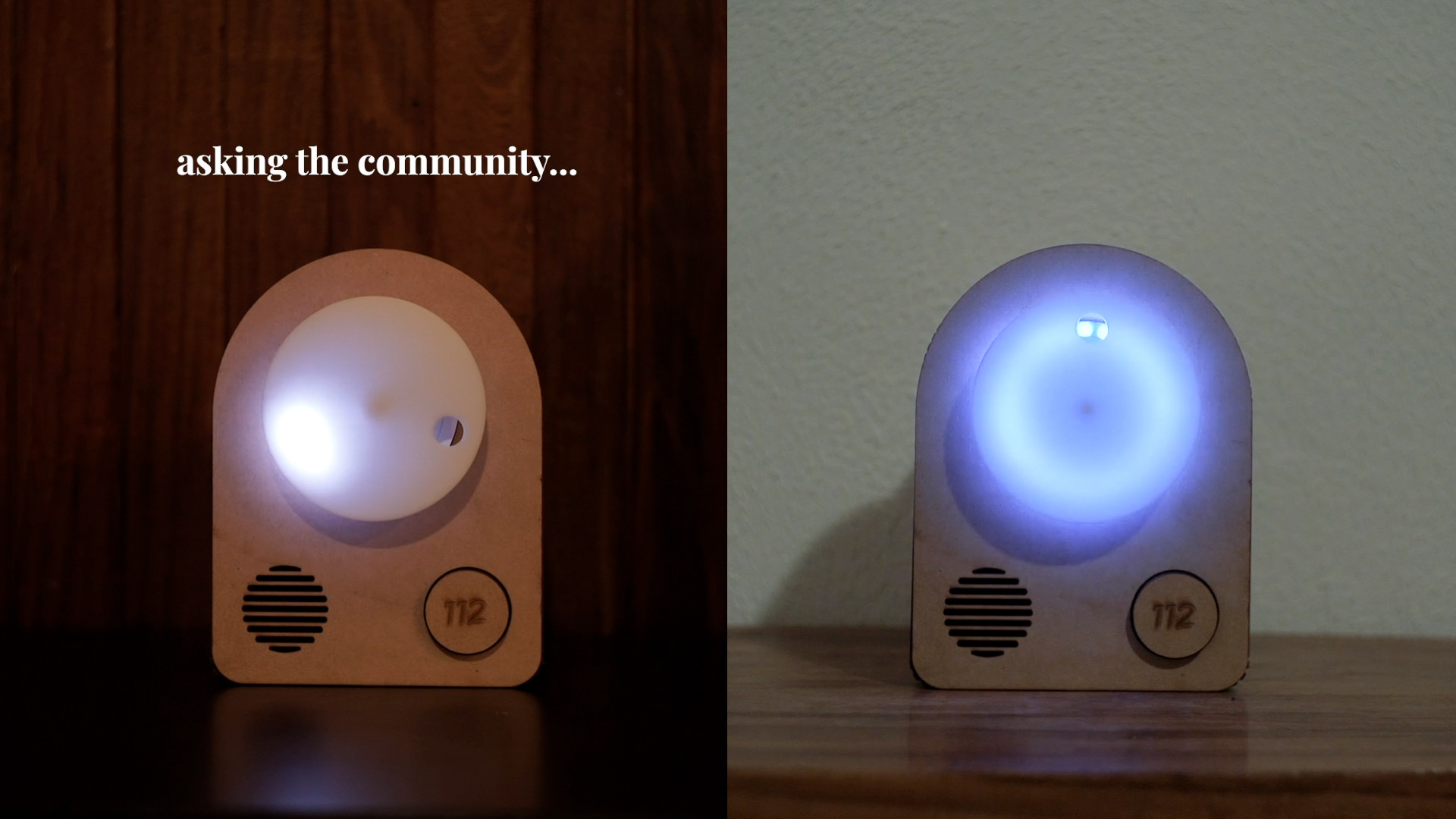

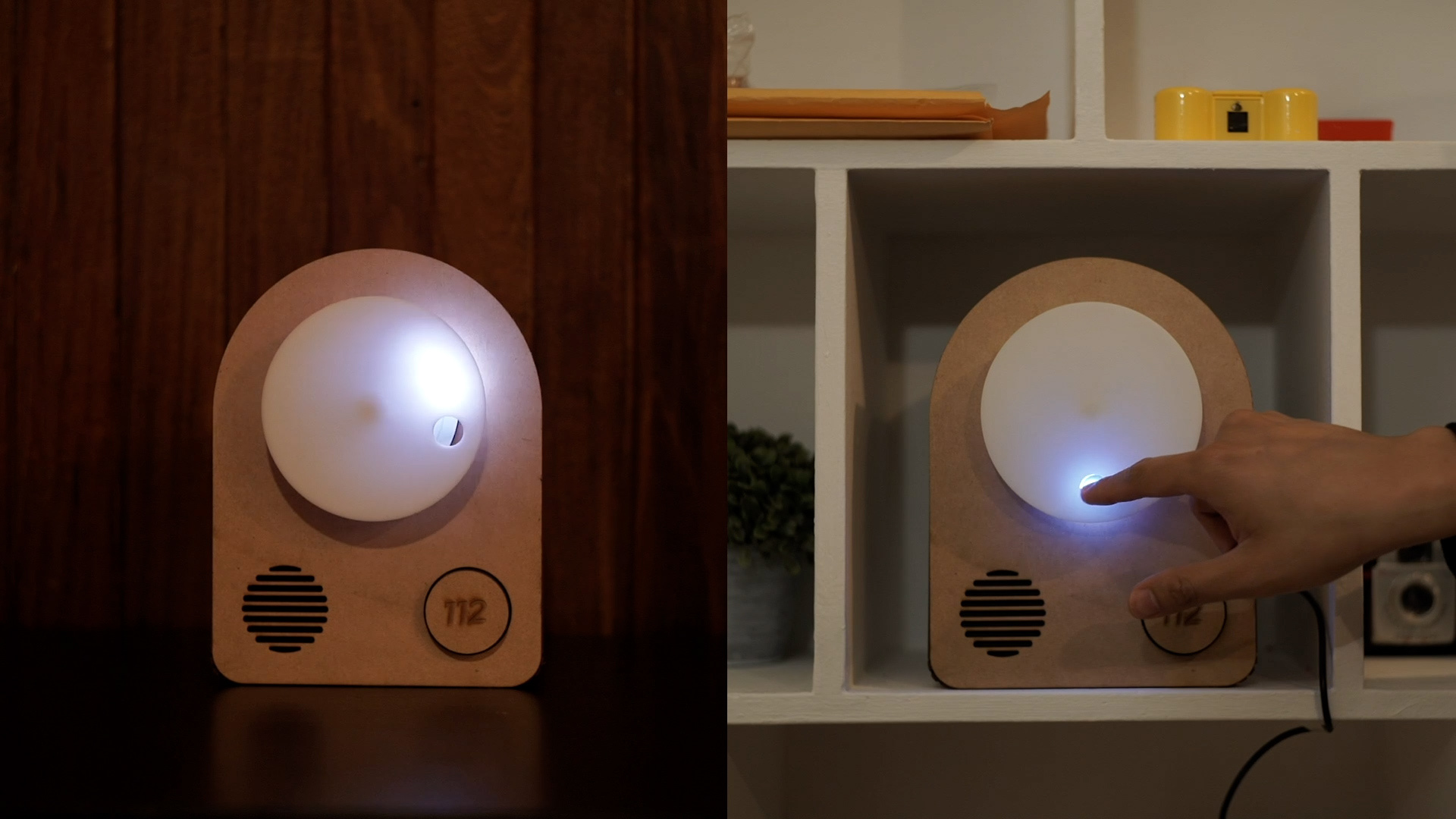
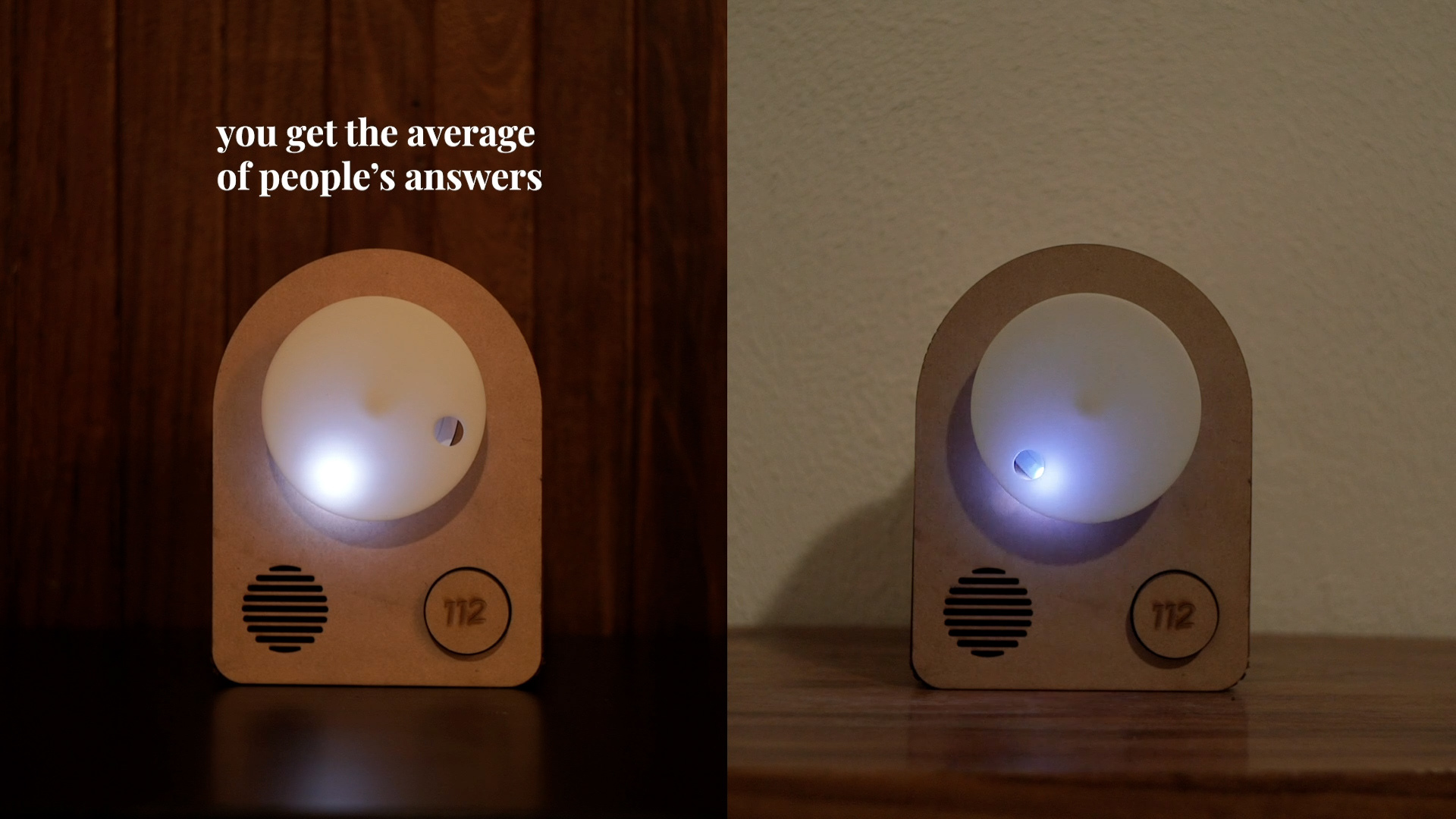
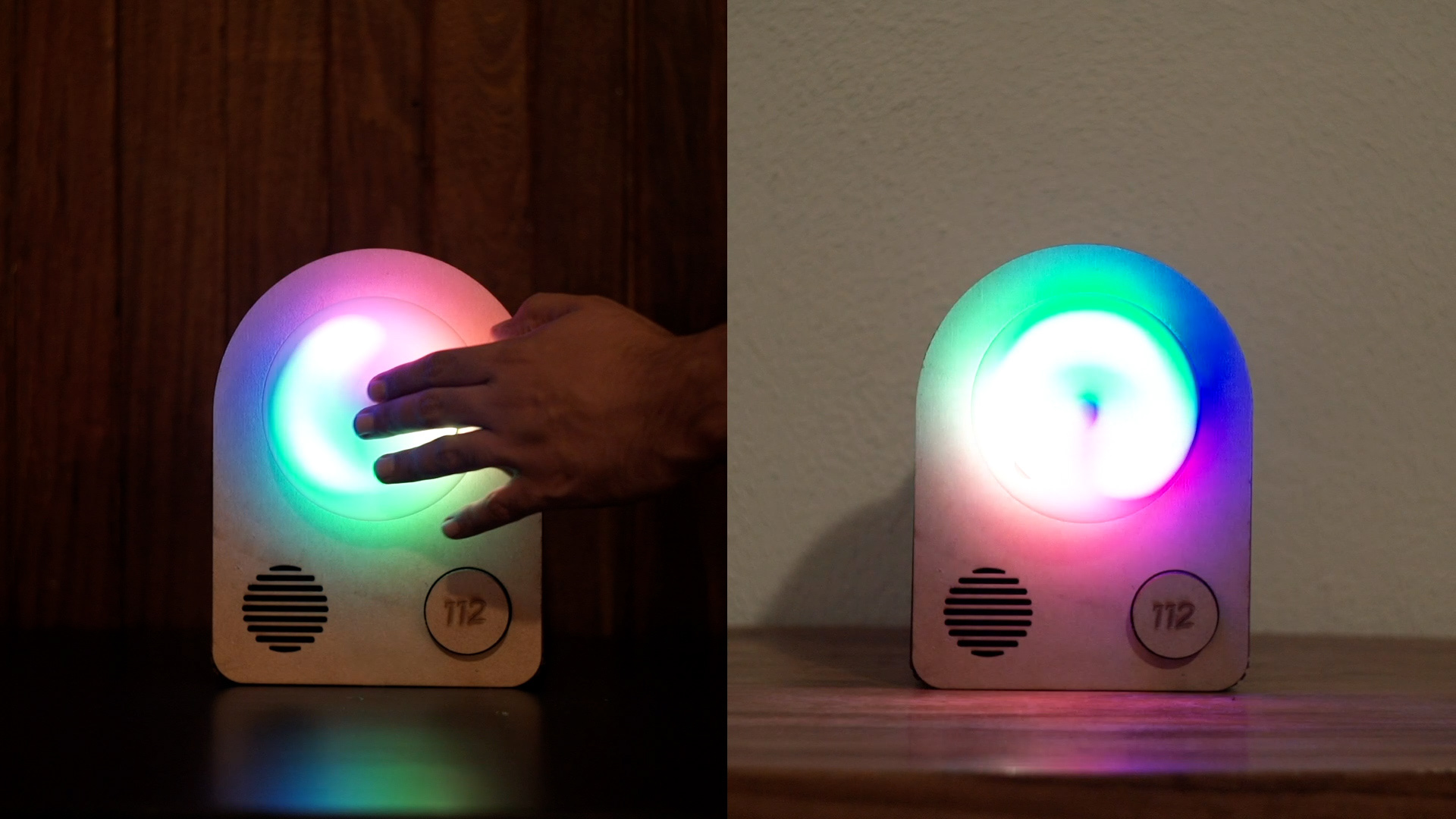
Siento Doce is a one-day school project developed at CIID (Copenhagen Institute of Interaction Design) in Costa Rica. The brief was to create a tangible device that explore people-to-time concept, with a local Costa Rican context within a city scale.
Due to the time constraints and a technical-heavy nature of the assignment, the design process involved quick brainstorming on the idea, followed by immediate prototyping using arduino, neo-pixel ring, laser cutting MDF board and acrylics. The next step was to shoot and edit the prototype video.

